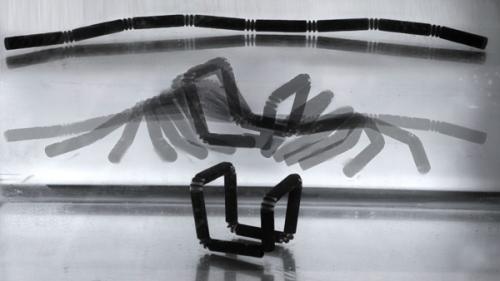
Many are only just getting their heads around the idea of 3D printing but scientists at MIT (Massachusetts Institute of Technology) are already working on an upgrade: 4D printing.
At the TED conference in Los Angeles, architect and computer scientist Skylar Tibbits showed how the process allows objects to self-assemble.
It could be used to install objects in hard-to-reach places such as underground water pipes, he suggested.
It might also herald an age of self-assembling furniture, said experts.
TED fellow Skylar Tibbits, from the MIT’s self-assembly lab, explained what the extra dimension involved.
“We’re proposing that the fourth dimension is time and that over time static objects will transform and adapt,” he said.
The process uses a specialized 3D printer that can create multi-layered materials.
It combines a strand of standard plastic with a layer made from a “smart” material that can absorb water.
The water acts as an energy source for the material to expand once it is printed.
“The rigid material becomes a structure and the other layer is the force that can start bending and twisting it,” said Skylar Tibbits.
“Essentially the printing is nothing new, it is about what happens after,” he added.

Such a process could in future be used to build furniture, bikes, cars and even buildings, he thinks.
For the time being he is seeking a manufacturing partner to explore the innovation.
“We are looking for applications and products that wouldn’t be possible without these materials,” he added.
“Imagine water pipes that can expand to cope with different capacities or flows and save digging up the street.”
Engineering software developer Autodesk, which collaborated on the project, is looking even further into the future.
“Imagine a scenario where you go to Ikea and buy a chair, put it in your room and it self-assembles,” said Carlo Olguin, principal research scientist at the software firm.
The 4D printing concept draws inspiration from nature which already has the ability to self-replicate.
“We already have 3D printers that can be injected with stem cells, printing micro slices of liver,” Carlo Olguin added.
“The idea behind 4D printing is to use the sheer power of biology and modify it. But it is still an elusive goal.”
The next stage for the research is to move from printing single strands to sheets and eventually whole structures. And water need not be the process’s only energy source.
“We could also have heat, vibration and sound,” said Skylar Tibbits.
[youtube Wm5JWRE-ff4]